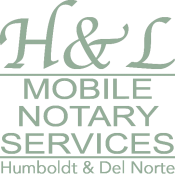The Oath or Affirmation is the verification by a notary public that the signer of a Jurat, an Affidavit, a Verification of Oath or a Verification of Affirmation has sworn to the truth of the document’s contents. The notary public will need to see the signer in person, see an acceptable form of identification and ask the signer to swear by Oath or Affirmation that the information in the document is true, and witness the signature of the document by the signer.
The signer has the choice to use either an oath or an affirmation. The difference between the two are that with an oath, the signer is swearing by a greater power, while with an affirmation, the signer is swearing by their own honor.
Sample Oaths and Affirmations
Credible Witness Oath or Affirmation (Civil Code Section 1185)
When a person does not have acceptable identification, their identification can be proven by the use of one or two credible witnesses. When the notary public personally knows a witness who personally knows the signer, this person can serve as the sole credible witness. In this case, the notary public must verify the identity of the credible witness by viewing an acceptable form of identification. The notary public must place the credible witness under oath or affirmation, wherein the credible witness swears or affirms the following:
- That the person appearing before the notary public as the signer of the document is the person named in the document;
- The credible witness personally knows the signer;
- The credible witness believes it would be very difficult or impossible for the signer to obtain acceptable identification
- The signer doesn’t have an acceptable form of identification; AND
- The credible witness is not named and does not have a financial interest in the document.
RETURN TO Common Types of Notarizations
